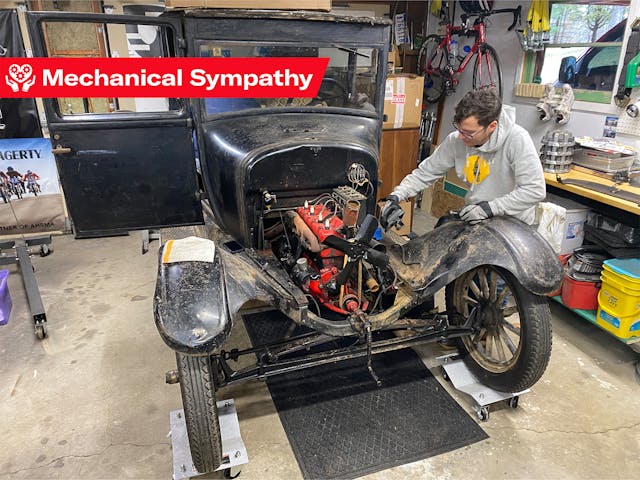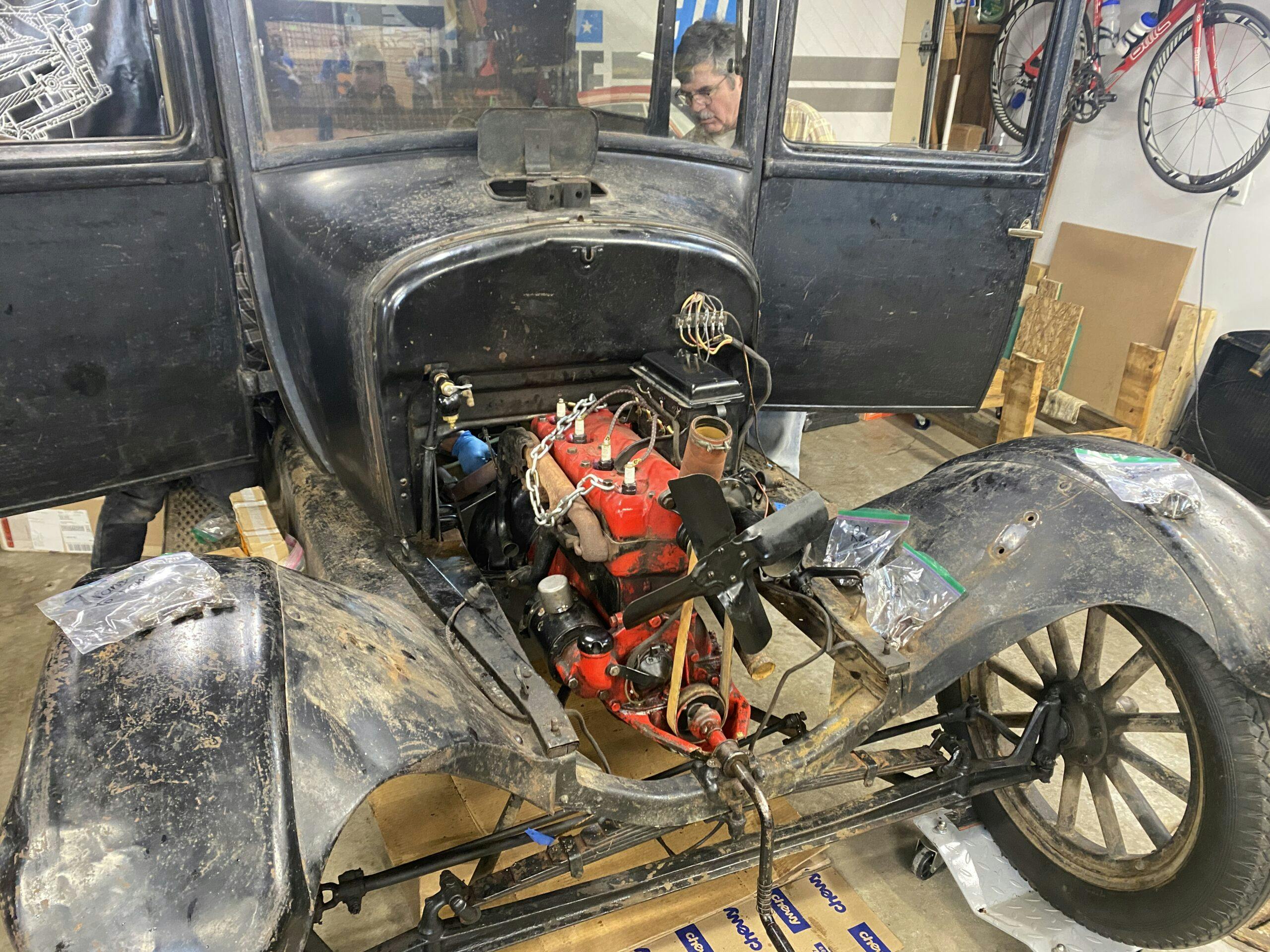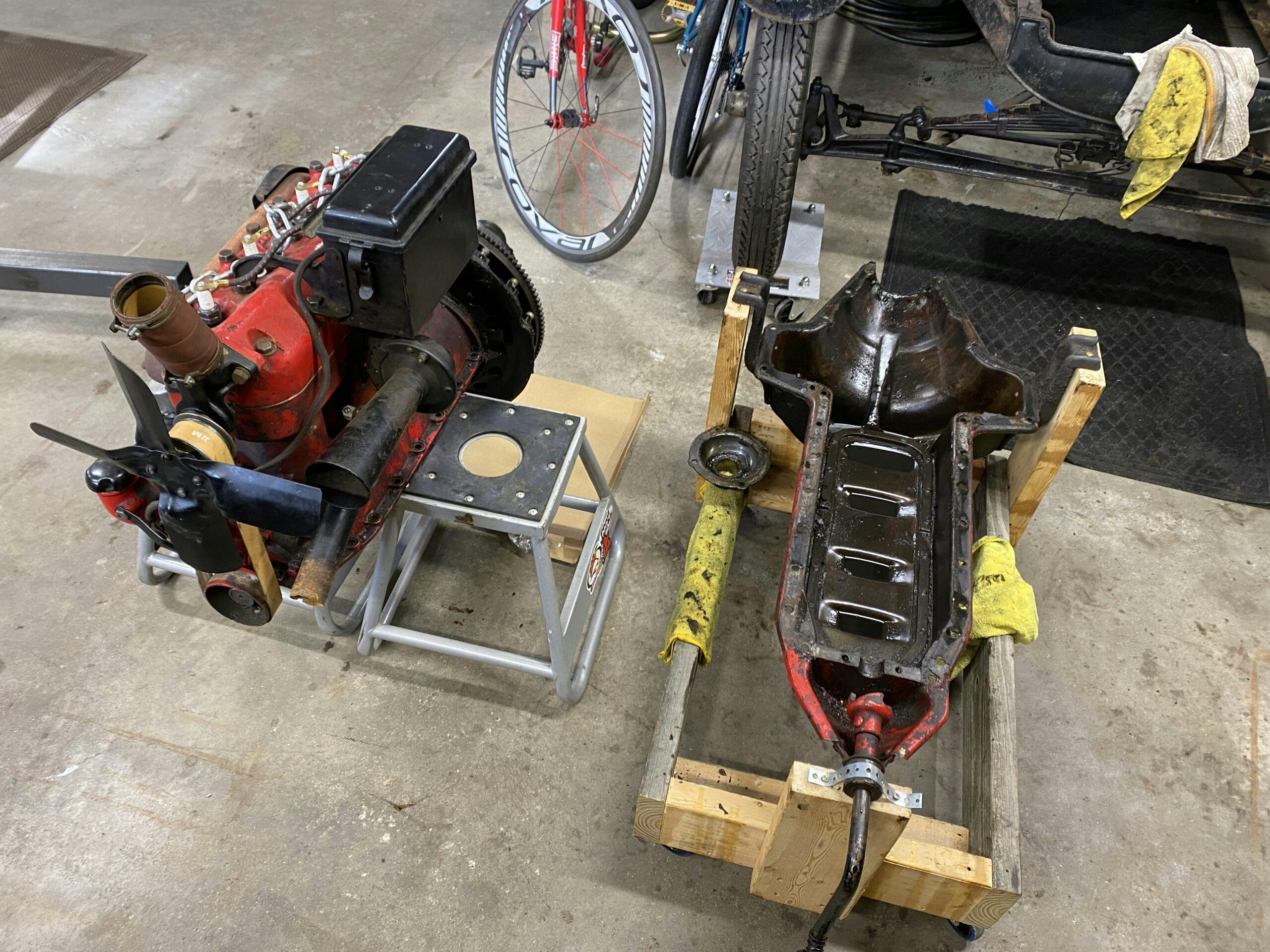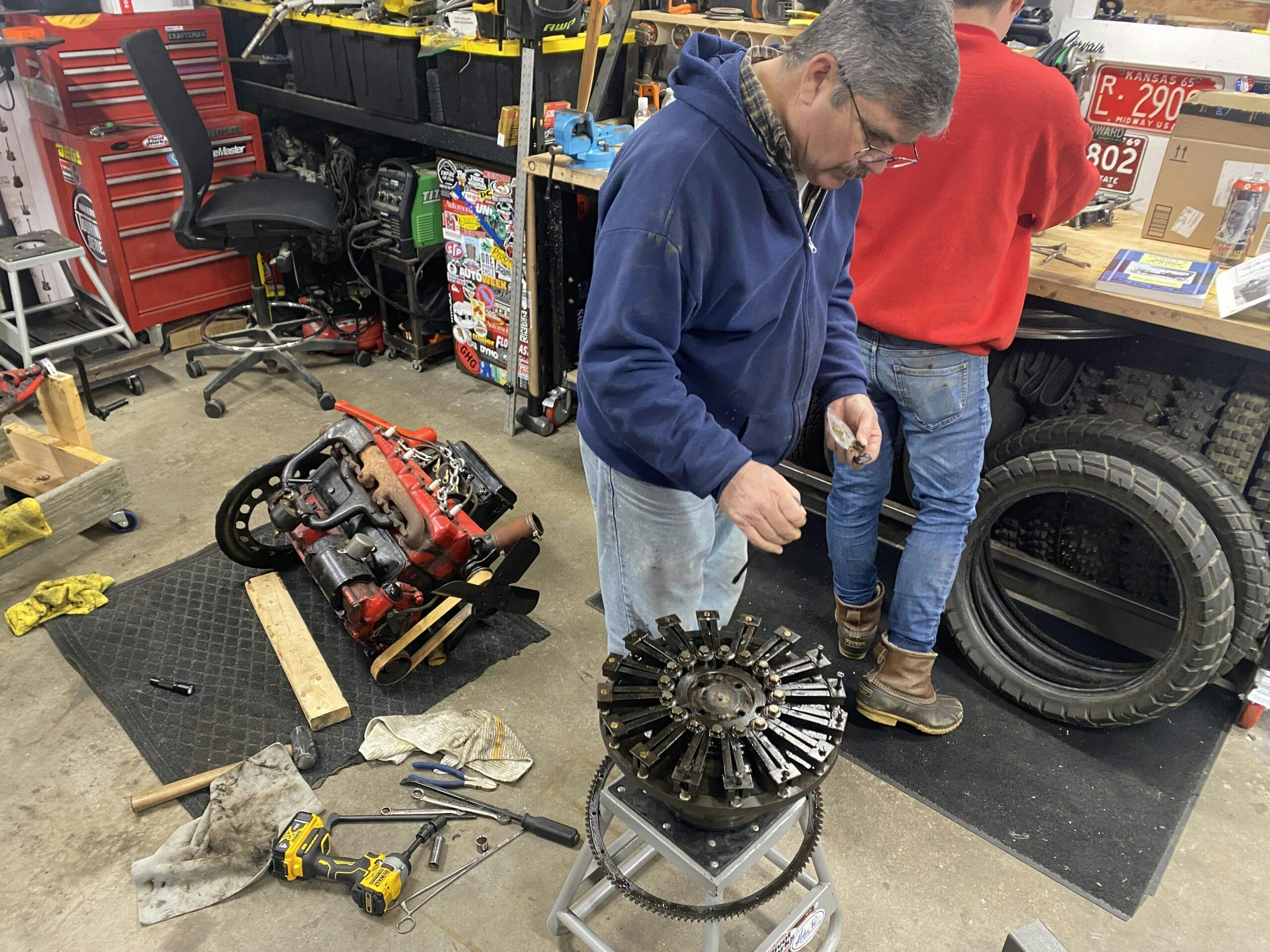Enjoy your car, even when enjoying it requires changing it
Winter storage is a real pain to find up here in Northern Michigan, so I work diligently to keep the owner of the pole barn in which I store my cars happy. When Bruce wanted some work done on his Model T Ford, I was eager to help. Interestingly, he felt the need to justify the changes he had planned for the car. That got me thinking.
Bruce is a really good human. He spent his life as a medical professional, with a side interest in cars. Each winter, his ’40s Chevy truck and first-generation, straight-six Ford Mustang are joined in the barn by my Corvair and Model A. Bruce is no stranger to vintage cars or to broken bones. Like most of us, he avoids the second whenever possible, but the crank-start on his Model T posed a threat.
When it comes to operating an automobile, a fracture hasn’t always been easy to avoid. Starting a ‘T requires intimate knowledge of how an engine works: You must calibrate the throttle, timing, and transmission correctly or the engine can backfire and spin the crank-start handle out of your hand and into your arm. If the engine does start, but you haven’t set the parking brake/transmission correctly, the car can run you over. Neither is an ideal situation.
Even after Charles Kettering patented and began to sell the electric self-starter for automotive engine applications in 1912, the crank-start hung around. It was cheaper. Henry Ford was still trying to push Model T prices down in the 19-teens, and therefore the cars came standard with hand-crank start. Well-to-do buyers could opt for an electric starter beginning in the 1919 model year, but even then it was a $20 add-on to a $500–$750 car that targeted the least affluent buyers. The car was a functional object, not a plaything, so many customers saved the dollars and got to cranking.
A century later, most Model Ts have become the opposite of what ol’ Henry designed them to be: Capable, relatively comfortable daily transportation. Speed limits have increased to the point that the 35-mph top speed of a Model T stands out in traffic—and not in a good way. Now that roads have been smoothly paved, the chassis, which is as stiff as cooked spaghetti, produces an unnerving ride. Heck, in 1927, when the last Model T rolled off that world-changing assembly line, it was already woefully outdated.
Yet Bruce is not ready to resign his Model T to life as a 1:1 scale-model car. This winter, while discussing when I would drop off my Corvair and Model A, Bruce and I got to discussing how to get his ‘T running again. Not just running, but running without the need to hand-crank it.

His car had all the parts for an electric starter. Sadly, Bruce said that not all of them were ready to be pressed into use: The starter ring gear nestled behind the engine yet in front of the two-speed planetary transmission had fewer teeth than a career bare-knuckle boxer.
After doing a little research, I proposed a barter exchange: In lieu of payment for a season of storage, I would pull the T’s engine and transmission, separate the two, replace the ring gear, then reassemble it all. Oh, and deal with any of the other hacked-up or cobbled-together things that would inevitably pop up. Sounded like a pleasurable Saturday to me, and Bruce literally had to do nothing.
Handshake, nod, deal.
I’ve heard jokes about fixing a Model T with bailing wire and pliers. Luckily, this job was almost that easy. After three evenings of work, the engine was back in the chassis. The sad old battery under the driver’s side floorboard had just enough juice to prove the new ring gear was correct, promising that this tired car was going to get a new lease on life come spring. All without Bruce having to fear broken bones.
Could Bruce instead get over his fear and learn all the tricks to hand-start his vintage Ford? Yes. There are countless Model T Fords driving around the world that do not have electric start and their owners are likely quite happy with that situation. Bruce wasn’t. Understanding the limits of the ‘T is one thing; having the tolerance to deal with its inconveniences when you don’t have to is another. Bruce wasn’t reengineering a solution to make this car something it was not. The factory gave the model electric start; he just wanted to get the system working on his car.

There is no right way to own or enjoy a car. Bruce elected to restore one system for the sake of his enjoyment. This is no different than restomods from the 1960s or custom trucks from the 1970s, except that Bruce isn’t declaring himself smarter than the engineers who spend years designing and building the car. He is keeping a functional object functioning, with an upgrade available when the vehicle was originally sold.
An automobile can be highly individual and the most important decision-maker involved in building, maintaining, and driving any given car is its owner. Neither Bruce nor you should never feel any regret for making your car an extension of yourself.
Of course, there is also a bit of comedy to that principle, since the automobile was born as an appliance. I don’t think I’ll ever have the desire to custom-paint my coffee maker, or re-gear my wife’s KitchenAid stand mixer for more torque, but who am I to judge if you do? Just don’t get caught in that mixer … I hear it can break your wrist.
Check out the Hagerty Media homepage so you don’t miss a single story, or better yet, bookmark it.







I’m one of the Model T drivers at the The Henry Ford’s Greenfield Village in Dearborn, Michigan. One of the questions we get from guests is “How much of this car is original?”. The answer? As much as we can preserve. The touring car we have are restorations using original engines and transmissions (and frames which are quite flexible). But we do modify them slightly with an eye for safety. The windshields are no longer plate glass, but laminated safety glass. We run alternators instead of generators (all our cars have electric starters… more on that later) because of the slow speeds mandated by the masses of pedestrian traffic on our streets. The alternators’ output keeps the batteries charged better. Kevlar bands in the transmission and modern lubricants as well as modern rubber compounds in the tires make the cars more reliable and safe too. But all of the cars retain the original transmission brakes, which are fine at the slow speeds we operate. Our Brass Era cars even retain the gas headlights for use at Holiday Nights in December.
As to installing electric starters, it’s much easier on the drivers and guests instead of having to have passengers depart the front seats to allow the drivers to exit the car to crank it if it stalls (which many new drivers do). There is no front door on the driver’s side on touring cars. However occasionally we demonstrate the proper way to crank the car to guests. To minimize the danger of broken bones, you have to pay attention the what you’re doing. First, make sure the hand brake is FULLY in the rearward position (we usually have another driver keep the foot brake on at the same time if another driver is available). Set the timing lever upward all the way to top dead center and the gas lever to the third to fifth detent, then turn the ignition on . The crank is engaged and grabbed at the 7-8 o’clock position using a cupped hand, keeping the thumb from wrapping around the crank handle. Then the handle is pulled upward to the 12-1 o’clock position whereupon the engine will usually fire if it is properly tuned. Our mechanics are extremely proficient in keeping our 14 cars in tune, so the engine usually fires nicely, especially if it’s already warm. All of this is not to say that any danger isn’t present, it just means you should always follow directions when cranking the engine manually.
Sorry for taking up so much space in my reply, but I just couldn’t let the broken hand/wrist comment slide. As a side comment, during the Season (mid April through December) I put more miles on a Model T than my personal car. And I’m happy to do so! My personal collector cars are a 1937 Ford Tudor Sedan and a 1971 VW Super Beetle convertible. The Ford is modified and the VW is bone stock.